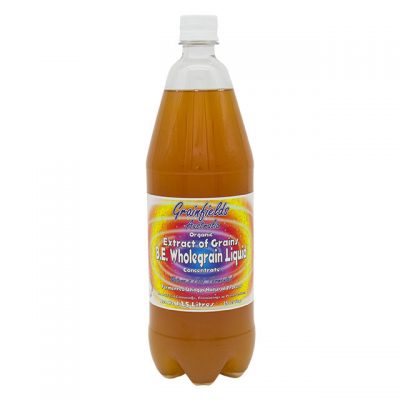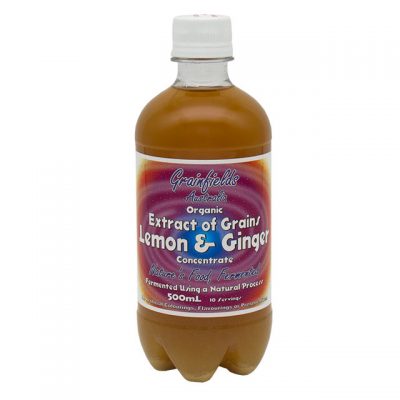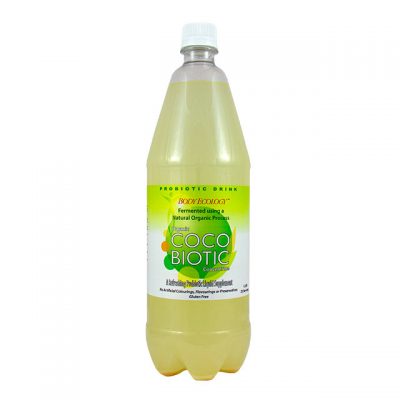Modern research shows that beneficial bacteria help balance the gut flora in your digestive system and reduce the levels of toxic pathogens that cause ill health. Additional research also suggests that the regular consumption of live lactobacilli bacteria can improve your gut flora and reduce the number of infections by reducing harmful bacteria. Probiotics literally means “pro-life”. It is used to describe products which include microorganisms that are beneficial to health.
Over the last century many changes to methods of food production have taken place. Any change within the food chain has a domino effect reaching all connecting links. Bacteria, microscopic in size, are vital participants in the process of food through the chain from soil to plants to the consuming animals and back to the soil. These tiny powerhouses break down organic materials by enzymatic digestion. Over some decades of practice the changes in food production have had the effect of decreasing the populations of beneficial bacteria in our food supply and producing new strains of antibiotic-resistant bacteria.
“Superbugs” is the new way of describing bacteria that have naturally genetically modified in response to exposure to antibiotics. These superbugs are resistant to antibiotics so they cannot be eradicated with the plethora of drugs currently available.
So, in summary, along with the decrease in good strains of bacteria in the food chain there has been an increase of these superbugs.
Changes that have affected bacteria in the human food chain:
Soil:
Mass production of food has lead to short-cuts being adopted that leave out vital steps, in particular leaving pastures to rest with forage crops, legumes and animals. This slow composting of pastures returns organic matter and nutrients to the soil. Bacteria need dead organic matter to live and multiply and they travel through the food chain to us from the soil so if the soil is depleted this continues up the food chain.
Plants:
In agriculture, antibiotics are applied as aerosols to acres of fruit trees, for controlling or preventing bacterial infections. High concentrations may kill all the bacteria on the trees at the time of spraying, but lingering antibiotic residues can encourage the growth of resistant bacteria that later colonize the fruit during processing and shipping. The aerosols also hit more than the targeted trees. They can be carried considerable distances to other trees and food plants, where they are too dilute to eliminate full-blown infections but are still capable of killing off sensitive bacteria and thus giving the edge to resistant versions. Here, again, resistant bacteria can make their way into people through the food chain, finding a home in the intestinal tract after the produce is eaten.
Livestock:
The same drugs prescribed for human therapy are widely exploited in animal husbandry and agriculture. More than 40 percent of the antibiotics manufactured in the U.S. are given to animals. Some of that amount goes to treating or preventing infection, but the lion’s share is mixed into feed to promote growth. In this last application, amounts too small to combat infection are delivered for weeks or months at a time. No one is entirely sure how the drugs support growth. Clearly, though, this long-term exposure to low doses is the perfect formula for selecting increasing numbers of resistant bacteria in the treated animals which may then pass the microbes to caretakers and, more broadly, to people who prepare and consume undercooked meat.
Humans:
The western world’s diet has increased in consumption of processed and devitalised food. The amount of sugar, fat, sodium, caffeine, preservatives, artificial colours and flavours in these foods encourages the growth of putrefactive organisms in the human digestive system. These types of foods put loads on the human system instead of providing nutrition. Modern medicines that kill non-resistant bacteria leave areas clear for resistant strains. People should also realize that although antibiotics are needed to control bacterial infections, they can have broad, undesirable effects on microbial ecology within the intestinal system and elsewhere. That is, they can produce long-lasting change in the kinds and proportions of bacteria and the mix of antibiotic-resistant and antibiotic-susceptible types not only in the treated individual but also in the environment and society at large.
Antibiotics in the Food Chain
The widespread use of antibiotics has had far-reaching effects. Imagine a rich lawn of grass; there may be one or two weeds in it but they are not obvious and do not spoil the overall effect. Now imagine the same area after all of it has been sprayed with a herbicide designed to kill grasses indiscriminantly. It is barren, but what happens next? Many weeds start to propogate over the entire area. Before the herbicide was applied the grass protected the area from the majority of unwanted weeds; without the grass weeds flourish. The same thing happens within our digestive system when we use antibiotics. Bacteria are wiped out indiscriminantly leaving an environment for strong resistant bacteria to take over.
Back to the grassy area; if the area is replanted with grass and looked after the weeds will not take over, but it is a matter of using enough grass seed and regularly maintaining the area. If we do not repopulate our digestive system with beneficial bacteria and then maintain them, resistant bacteria can take over.
Multitudes of microorganisms inhabit our systems; all have a role to play somewhere. If they migrate to the wrong part of the system because that part has no microflora they can then become a problem. Imagine our grassy area spreading its runners into a garden bed that has a lot of open, uncultivated areas; the grass itself becomes a weed. The same can happen within our systems.
Candida albicans is a yeast normally found in the intestine. As long as the immune system is healthy Candida albicans is regulated and kept under control, it is considered a normal part of the intestinal flora. Many people who have a problem with candida overgrowth in their system have histories of antibiotic use. Any imbalance in the populations of friendly bacteria provides an opportunity for other microorganisms to over-populate rampantly and infect other body organs and tissues. Candida albicans has been found in peoples’ mouths when they are badly infected; its place is in the intestine.
Most bacteria help us. They work in our bodies, in the food chain, and in the decomposers of the world to maintain life. They are designed for specific roles and are a vital part of the world in which we live. They may well be the only solution to some of the ecological problems we face both within our systems and in the wider community. They are powerfully designed to do some great things.




